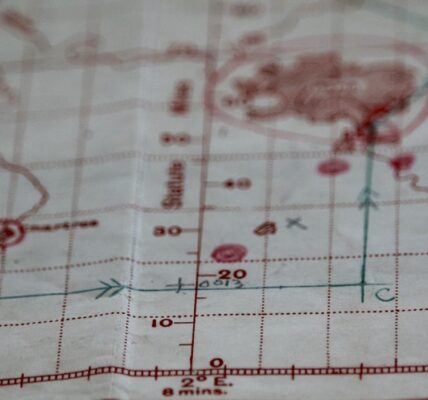When determining the ideal location for an airport, one of the most critical factors to consider is the geology of the terrain. A thorough understanding of the ground conditions, soil composition, and potential environmental hazards is essential to ensure the safety, longevity, and operational efficiency of an airport. Poor geological planning can lead to issues such as unstable runways, poor drainage, and increased susceptibility to natural disasters, all of which can affect the overall functionality of an airport. This article explores how geology influences airport site selection and why it’s vital to the planning process.
Pegasus Airlines and Sabiha Gökçen International Airport
Pegasus Airlines, a major low-cost airline based in Turkey, operates primarily out of Sabiha Gökçen International Airport in Istanbul. The choice of location for this airport reflects careful consideration of the region’s geology. Sabiha Gökçen is situated on the Asian side of Istanbul, strategically placed away from the seismic risks associated with areas closer to the Marmara Sea. While Istanbul is in a seismically active region due to its proximity to the North Anatolian Fault, airport planners took the geology of the site into account to minimize earthquake-related risks.
The terrain around Sabiha Gökçen International Airport offers solid ground stability, critical for handling the daily influx of Pegasus Airlines’ fleet. As the airline continues to expand its operations, the airport’s geological foundations ensure that it remains a reliable hub for both domestic and international flights. Pegasus Airlines’ success is not just tied to its low-cost model but also to the well-planned infrastructure that supports its growing network.
The Importance of Soil Composition

One of the primary geological considerations when choosing an airport location is the composition of the soil. Soil plays a crucial role in determining whether the ground can support the heavy infrastructure of an airport, including runways, taxiways, terminals, and control towers. Different soil types have varying load-bearing capacities, and selecting a site with stable, strong soil is essential to prevent subsidence or other forms of ground instability.
Clay soils, for instance, can be problematic because they expand when wet and shrink when dry. This shifting can lead to cracks in runways and foundations, which could result in costly repairs and even temporary shutdowns of airport operations. Sandy soils, on the other hand, provide better drainage and are more stable, but they may still require compaction to ensure they can handle the weight of aircraft and airport structures. In regions with unstable soils, engineers may use techniques like soil compaction or the installation of piling systems to reinforce the ground before construction begins.
The Role of Bedrock and Subsurface Conditions
Beyond the surface soil, the underlying bedrock is another critical factor in determining whether a location is suitable for an airport. Bedrock provides a stable foundation that can support the heavy loads imposed by airport infrastructure and aircraft. In areas where the bedrock is too deep or composed of soft, fractured materials, additional geotechnical work may be required to ensure stability.
Airports built on solid bedrock have the advantage of natural support, reducing the need for expensive foundational work. In contrast, airports located in regions with deep or unstable bedrock may require deep foundations or piling to reach more stable ground layers. These additional steps can significantly increase construction costs and time, but they are necessary to ensure long-term safety and performance.
Seismic Activity and Earthquake Risk
For airports located in regions prone to seismic activity, such as the area around Istanbul where Pegasus Airlines operates, planners must account for the potential impact of earthquakes. Fault lines and the associated risks of ground shaking, liquefaction, and fault rupture can pose serious threats to airport infrastructure. In these areas, detailed geological surveys are essential to identify seismic risks and implement appropriate design measures to mitigate damage in the event of an earthquake.
For instance, airports in seismically active regions may be designed with seismic retrofitting to ensure that runways, control towers, and terminals can withstand the forces generated by an earthquake. In some cases, this may involve reinforcing buildings with steel frameworks, designing flexible foundations that can move with the ground, or using advanced materials that absorb seismic energy. Airports in these regions must also have contingency plans for evacuations and emergency landings in the aftermath of an earthquake.
Drainage and Flood Prevention
Effective water drainage is another critical geological consideration when selecting an airport location. Flooding can cause severe disruptions to airport operations, leading to delays, cancellations, and damage to infrastructure. Therefore, the site’s proximity to bodies of water, such as rivers, lakes, or oceans, and its susceptibility to flooding must be carefully evaluated.
In coastal areas, airports are often exposed to sea level rise and storm surges, which can lead to runway flooding and long-term erosion. To prevent these issues, engineers may design elevated runways or build comprehensive drainage systems that allow water to flow away from critical areas like taxiways and runways. The ability of the soil to absorb water, known as permeability, also plays a role in determining how well the ground can handle heavy rainfall or flooding events. In regions with poor natural drainage, artificial systems are installed to channel water away from the airport.
Airports located in low-lying areas or near flood-prone zones require constant monitoring and maintenance of drainage systems to prevent water buildup. Poorly planned drainage can lead to hazardous conditions for aircraft, including hydroplaning during takeoff and landing.
Topography and Terrain Considerations
The topography of an area—the natural features and elevation of the land—has a major impact on the suitability of a site for airport construction. Ideally, airports should be located on flat or gently sloping terrain, which minimizes the need for extensive grading or earth-moving operations. Uneven or hilly terrain can significantly increase construction costs and complexity, as it requires more intensive reshaping of the land.
Airports situated in mountainous areas face additional challenges. Mountains and hills can obstruct flight paths and create dangerous wind patterns, increasing turbulence during takeoff and landing. Pilots operating in these regions must be highly skilled in navigating difficult approaches and departures, and the airport’s design must account for the challenges posed by the surrounding terrain.
In cases where flat land is not available, engineers may need to use techniques like land reclamation or excavation to create suitable space for the airport. However, these methods can be expensive and time-consuming, making flat or gently sloping terrain the preferred option whenever possible.
Environmental and Geological Hazards
In addition to soil composition, bedrock stability, and drainage concerns, airports must be built with an awareness of environmental and geological hazards. Some areas are prone to landslides, sinkholes, or volcanic activity, all of which can pose serious risks to airport infrastructure.
For instance, airports near active volcanoes may need to implement design features that protect infrastructure from ashfall or lava flows. In regions susceptible to landslides, slope stabilization measures may be necessary to prevent the ground from shifting and damaging the runway or terminal buildings. Sinkholes, while less common, can develop suddenly and cause severe damage, particularly in areas with karst topography or limestone bedrock. Identifying these risks early through geological surveys allows planners to take preventive measures and avoid future disasters.
Balancing Cost and Geology
While the geology of a site is critical to the success of an airport, it is also essential to balance these geological considerations with the financial realities of the project. Constructing an airport in a region with challenging terrain or unstable soils can significantly increase the cost of construction and long-term maintenance. However, neglecting geological factors can result in even greater expenses down the road, as repairs and modifications to unstable infrastructure are both costly and disruptive.
Geology plays a central role in determining not only where an airport should be built but also how it should be designed to ensure its functionality and longevity. The careful analysis of soil, bedrock, water drainage, seismic risks, and other factors helps planners choose locations that can support the heavy demands of modern air travel while minimizing environmental impact and long-term operational risks.



